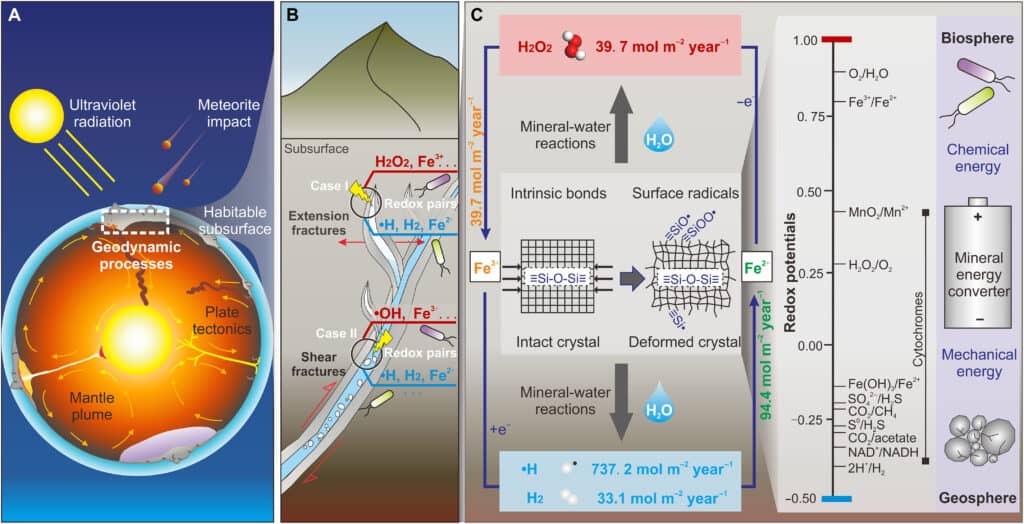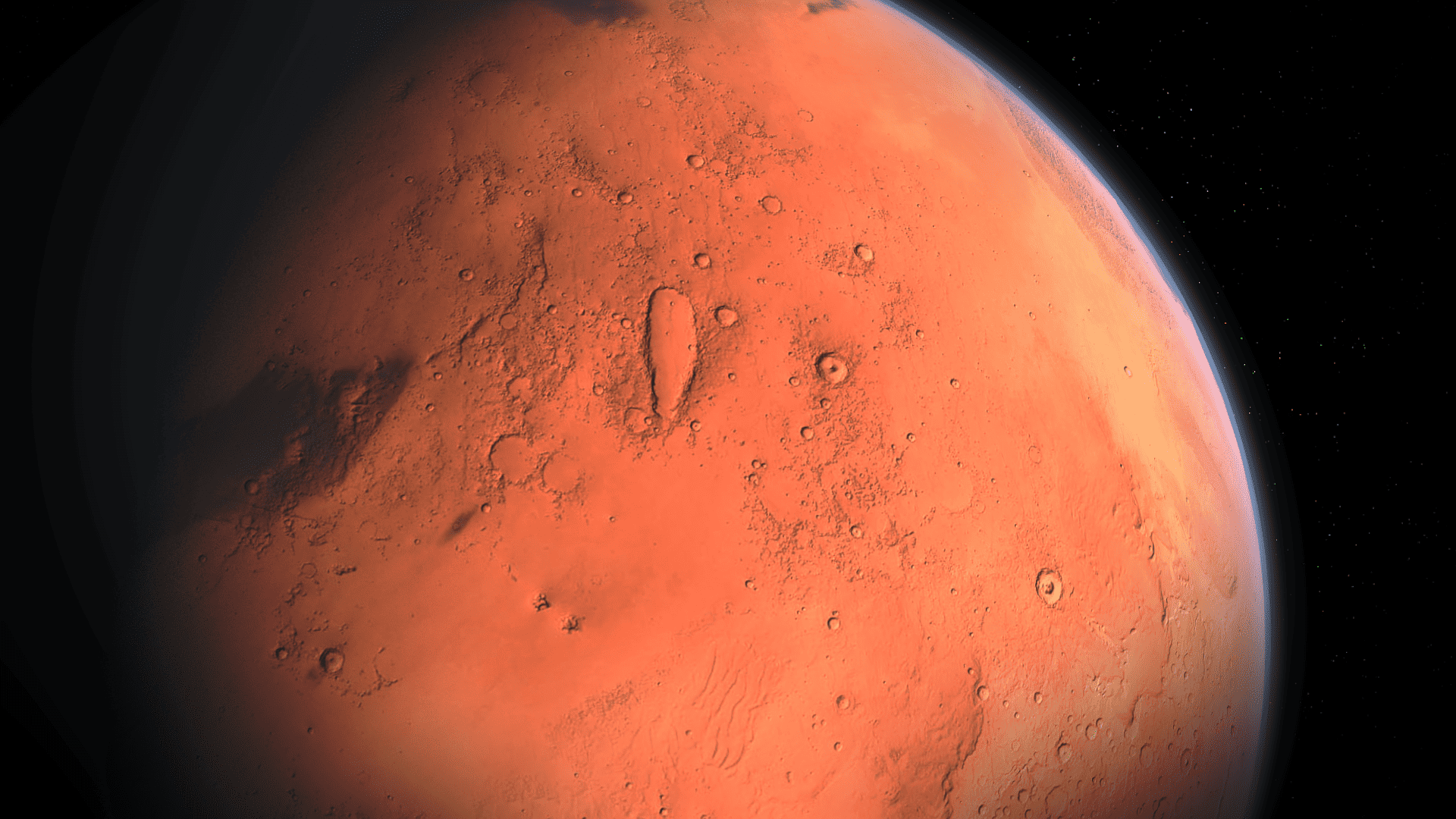Mars, it seems, has a talent for turning chaos into chemistry. A new laboratory study published in Science Advances by Chinese researchers, shows that when quartz‑rich rocks break and meet a little water, they quickly generate hydrogen gas and mild oxidants, while also making dissolved iron switch between two useful forms.
On Earth, that trio — hydrogen, oxidants and shuffling iron — can sustain microbes living far below the surface and far from sunlight. If the same reactions occurred on Mars, the planet’s frequent quakes and ancient groundwater could have created countless tiny havens for life deep beneath the Red Planet.
The idea is relatively straightforward. Stress a rock until it snaps, and the broken surface becomes highly reactive. Touch that surface with water and within minutes, hydrogen appears along with trace amounts of peroxide‑like compounds.

In the lab, the researchers tested two fault styles. One breaks open first and then meets water; the other shatters and grinds while already soaked. Both produced hydrogen rapidly; however, the “break‑then‑wet,” style set up the sharper chemical contrast, with oxidants dissolved in the water and hydrogen trapped as gas inside the crack. Microbes on Earth thrive on exactly that sort of split, using the chemical push‑and‑pull to power their metabolisms.
Numbers put the effect in perspective. Worldwide, shallow earthquakes could create about 110 million moles of hydrogen each year — not the most significant source on the planet, but notable (about 1,000 Olympic-sized swimming pools). At the local scale, though, the punch is more Mike Tyson-like: roughly 33 moles of hydrogen per square meter of fresh fault wall per year. That is far more than underground microbes typically need to stay active.
Mars provides a stage well suited to this chemistry. Earlier in 2025, researchers mapped more than 15,000 kilometers of ancient riverbeds in the Noachis Terra highlands. These “inverted channels” are the stony remnants of long‑vanished rivers, proof that liquid water once lingered on the surface for extended periods. Where rivers flowed above, water also seeped below, filling fractures and pores that would react just as Wu’s quartz did in the lab.
The Red Planet also supplies its own oxidants. NASA’s Phoenix Lander found perchlorate salts in polar soils — roughly half a percent by mass in the samples it tested — that can attract moisture and help form salty brines. Telescopes and orbiters have detected tiny amounts of hydrogen peroxide in the thin Martian atmosphere. Underground, those oxidants become gentler and can serve as the electron‑accepting half of the chemical partnership with hydrogen.
From 2018 to 2022, NASA’s InSight Lander recorded more than 1,300 marsquakes, including some linked to deep tectonic activity. Every tremor that widened a crack or crushed grains would have triggered the same rapid chemistry the team observed, releasing hydrogen and oxidants into any lingering pockets of groundwater.
Earth offers a useful comparison. At Kidd Creek mine in Canada, waters trapped in fractures for hundreds of millions of years still hold hydrogen and other chemicals produced by rock‑water reactions. Microbial communities thrive there without sunlight, living off reactions much like those proposed for ancient Martian cracks. It is not proof that Mars followed the same script, but it shows the play is possible.
For future Mars missions, the study provides a practical checklist. Explore old fault zones and sample the minerals that fill their fractures. Look for the package of clues that tend to appear together: hydrogen, traces of peroxide or oxygen, perhaps a hint of methane and rocks showing iron in both its reduced and oxidized states near fresh breaks. No single clue would confirm life, yet the bundle would point to places where nature resets the chemical conditions over and over again. On Mars, that could be exactly where a lonely microbe might have found the means to endure.
